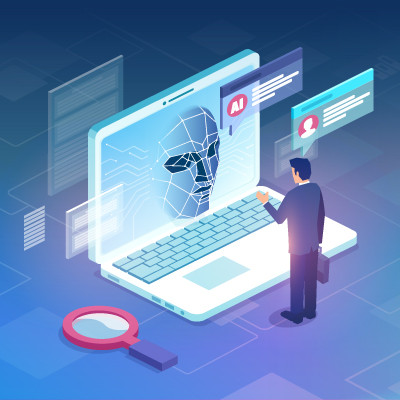Managing a budget is difficult, let alone budgeting for something as complicated as your IT infrastructure. Even though IT is notoriously difficult to budget for, it still continues to grow as a priority for organizations. How can you ensure that your budget can keep up with the projected expenses of your IT in the next several years?
Washington Works Blog
Prior to the COVID-19 pandemic, business owners considered remote work a forbidden fruit. If employees got a taste, they would only want more of it. Nowadays, remote work is a bit more commonplace, no doubt as a result of the pandemic forcing most knowledge workers into some sort of remote work arrangement. How have companies adjusted to this new reality? Let’s look at the numbers.
You don’t need us to remind you that running a business can be incredibly stressful. This stress comes from all kinds of factors, whether it concerns your staff, your management, or even your customers. However, if left unchecked, friction between your various internal forces can have negative consequences on your operations.
Artificial intelligence's transformative potential is no longer just available to enterprise businesses. Now small businesses are increasingly using the technology to enhance efficiency, improve customer experiences, and drive innovation for the betterment of an organization. Today, we start to explore three popular ways in which small businesses use AI to refine the way they do business.
When your employees struggle with their technology, who do they turn to? Do you have anyone at your business who is, without a doubt, the go-to IT resource who can help them address simple issues like changing a password or fixing a problem with their workstation? There is a name for this kind of support: the help desk. Let’s discuss why your business needs one and why it might be in your best interest to outsource this responsibility.
Businesses have a lot of stressful things going on at any given moment, especially when timelines and deadlines are considered. You have projects that you need to complete for your customers and employees who need to be paid on time, and you would be hard-pressed to find a situation for your organization that isn’t under some sort of time crunch. How can you use technology to make sure that these timelines are met? Let’s go over some solutions.
Happy New Year! It’s officially that time when we all make resolutions meant to help improve ourselves, so why not include your business? Better yet, why not make business resolutions that you’re more likely to keep?
Let’s explore some of the ways that you can design your business’ resolutions to maximize the likelihood that you’ll keep them and benefit from them in the long term.
There are significant benefits to be had by businesses that choose to seek out IT services and assistance from a managed service provider like us. We’re very aware that our word isn’t going to be super convincing on its own, of course, so let’s review what a managed service provider can do and how working with us can help your business.
While it’s true that technology has become essential for businesses, organizations still often grapple with various technology issues that can impact how they do business. Many times organizations get turned around and it can cause some aspect of their IT to be problematic for them. Today, we look at five common technology issues that businesses frequently face.
Did you know that a lot of technology investments go over budget or don’t necessarily provide the return that was intended? With technology playing such an important role in business, getting the right technology to fit your business is critical to your efficiency efforts. It’s not always as easy as identifying features in a huge software profile or using the cloud for everything. In today’s blog, we offer five useful tips to help you make informed decisions about your business’ technology.
The workplace has undergone a dramatic shift over the past several years in favor of remote work, due in no small part to worldwide circumstances. In fact, many workers who would prefer to work in-office found themselves unable to, pushing the button on the topic of remote work even more. While there are some outspoken companies that want to see the return of in-office work, experts in the industry seem to be of the opposite opinion.
Operational problems can not only stymie growth, they can trigger a lot of other issues that can be detrimental to the long term success and sustainability of a business. Unfortunately, it’s often a little difficult to see while you are in the heat of battle. Let’s take a look at some of the solutions that can solve some of the common operational problems that small businesses run into.
With technology being so important for all businesses in at least some capacity, it’s no small wonder that effectively using it (and having someone on-hand to manage it all) is tremendously valuable for any company. This is where a managed service provider (MSP) can be helpful, even for businesses that have a dedicated IT department. All small businesses benefit from working with an MSP.
When it comes to your business’ continuity, you should know that even small issues pose a great threat—especially when they involve your business’ data. Let’s examine two situations where even small mistakes could lead to a cascade of problems that could leave your organization strapped for cash and struggling to stay alive.
Productivity is the lifeblood of any business, and understanding what it entails is paramount for every decision-maker in the corporate world. The concept of productivity is highly contextual, as no two businesses operate in the same way or are managed identically. Today, we present a set of key performance indicators (KPIs) that you need to consider. These twelve metrics will assist you in gauging whether your business is meeting productivity expectations or falling short.
Across the board, modern businesses rely on no small amount of technology to support their operations, making it key that you, one, have the technology your operations require, and two, have the means to keep this technology operational. Fortunately, managed services help you by providing both. Let’s review what managed services are, and how they work.




















